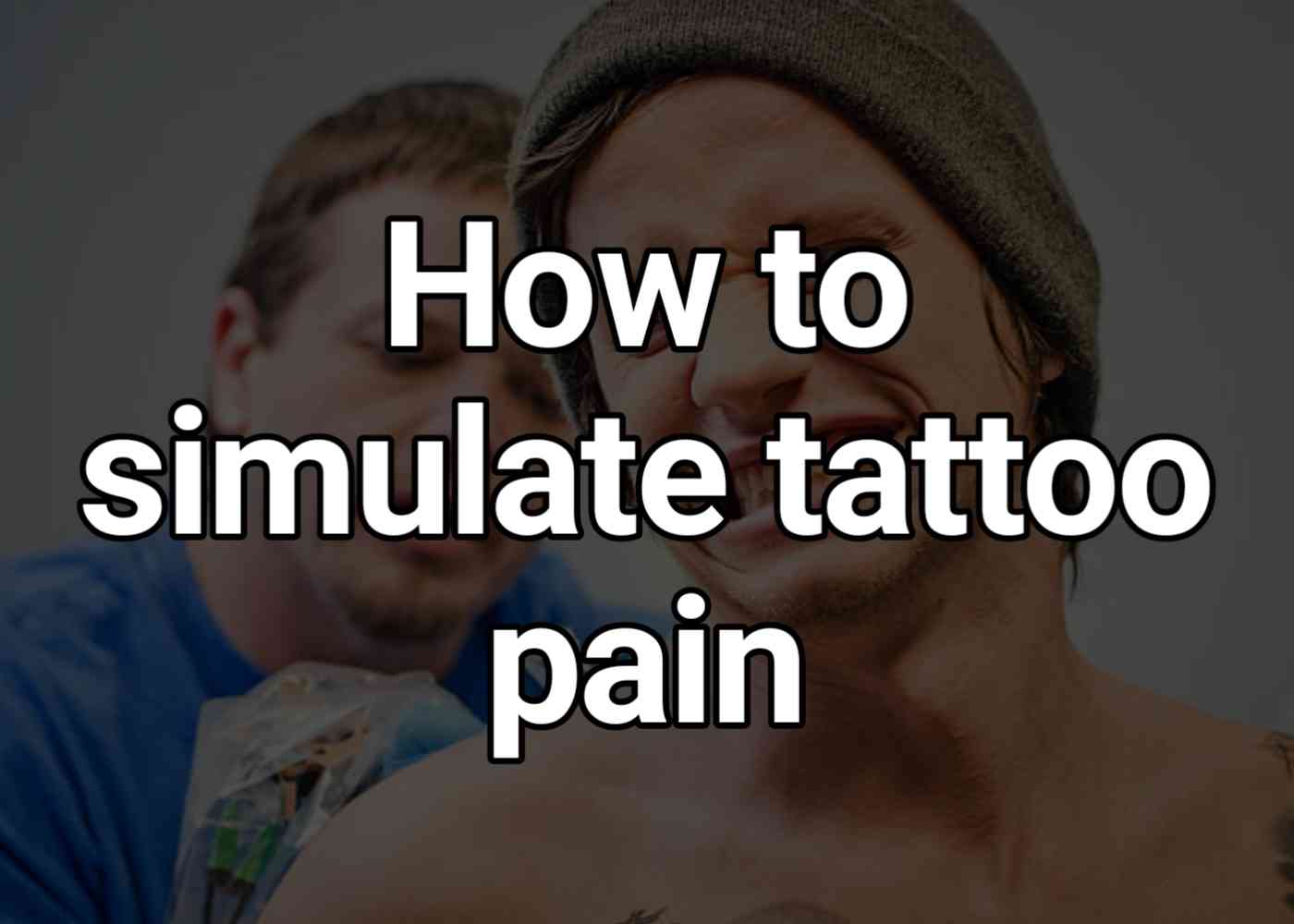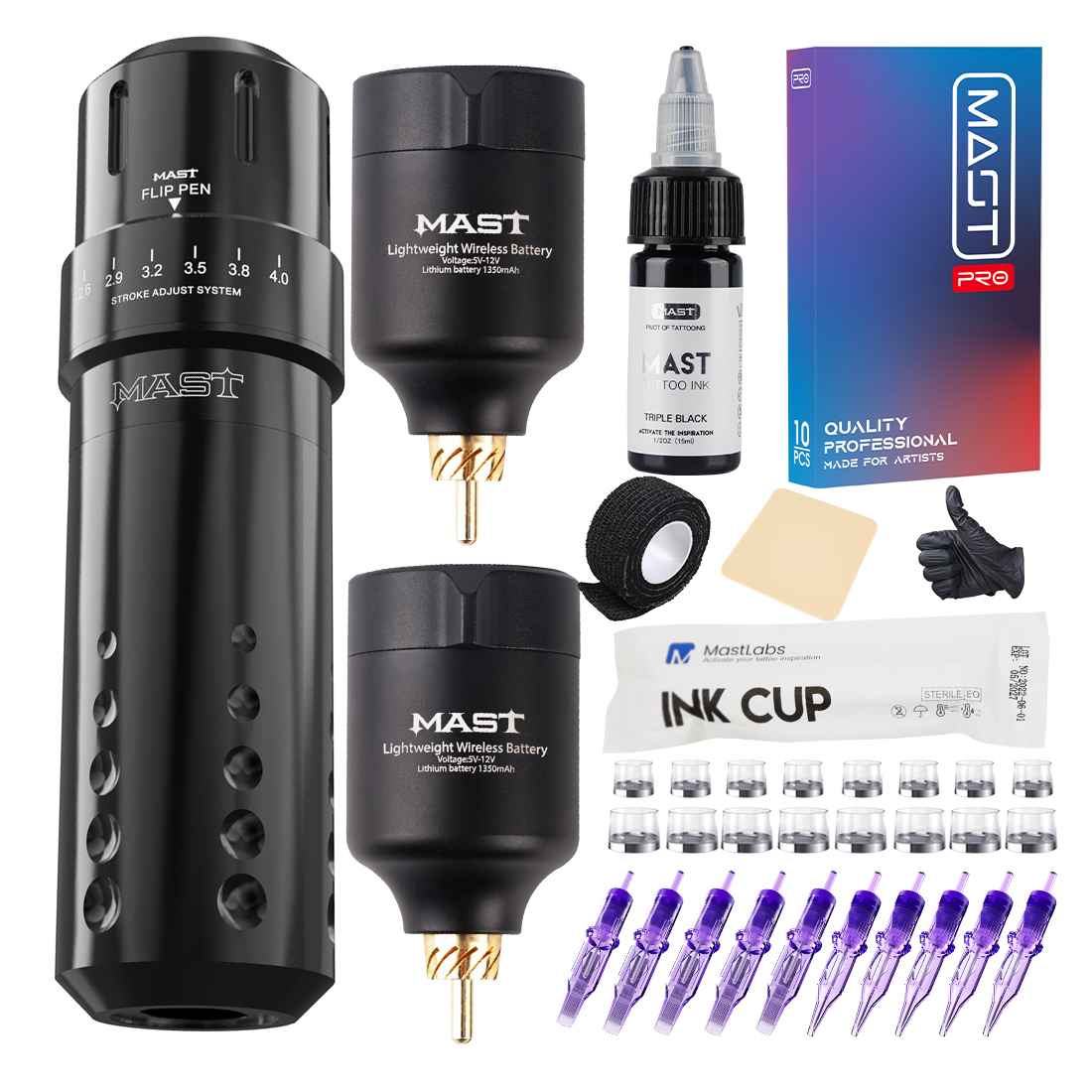When deciding to get a tattoo, many people are aware that the pain will be something they have to deal with.
However, there are ways to simulate the tattoo pain so that you can get an idea of what it’s like before actually getting one.
In this post, I will share with you on how to simulate tattoo pain.
Let’s get to it;
:- Use a pin or needle to poke yourself in the skin. This will give you a sense of the sensation of being tattooed, as the needle will be piercing your skin repeatedly.
:- Hold a cold object (such as an ice cube) against your skin for a prolonged period of time. This will cause the skin to numb, making the sensation of being tattooed less painful.
:’ Use a low-level TENS machine on the area where you would like to simulate tattoo pain. This will create a buzzing sensation that can feel similar to the sensation of being tattooed.
:- Use a rubber band or hair tie to create a tight band around your arm or leg. This will restrict blood flow to the area, creating a sensation similar to the pressure of a tattoo needle.
Now, although I have shared with you some ways to replicate tattoo pain, note that it’s only for educational purposes and will not be responsible for any pain or injury sustained.
This is because it’s not appropriate or advisable to try to simulate tattoo pain.
Tattooing is a medical procedure that involves the insertion of ink into the skin, and it can be painful.
While some people may be more resistant to pain than others, tattoos can still be uncomfortable or painful for everyone.
Additionally, attempting to simulate tattoo pain could cause harm or injury.
It is important to respect the process of tattooing and the potential pain that it can cause.
If you are interested in getting a tattoo but are concerned about the pain, you may want to discuss your concerns with a tattoo artist or a healthcare professional.
They can provide you with more information about the tattooing process and help you prepare for it.
How do you replicate the feeling of getting a tattoo?
Getting a tattoo is an incredibly personal experience.
Even if you’ve seen someone get a tattoo before, there’s no way to truly replicate the feeling of getting one yourself.
However, there are some things that can help simulate the experience.
One way to try to create the same sense of excitement and anticipation is to choose a design that you’re especially drawn to.
Once you have it in mind, take some time to sketch out your idea before going ahead with the tattoo actually.
This will help you visualize the finished product and avoid any last minute surprises.
Another thing that can help is finding a tattoo artist who you trust and enjoys working with clients.
This will ensure that they put their own spin on your design and give you an unforgettable experience.
Finally, don’t forget about the aftercare!
Also read: How to not flinch when getting a tattoo
How do I make tattoo pain dull?
The process of tattooing can be a very painful experience, but there are ways to make the pain less intense.
:- One way is to numbing the area beforehand with a numbing agent. This will help reduce the amount of pain felt during the procedure.
:- Additionally, comfortable clothing and jewelry can also make the experience more tolerable.
:- Finally, taking some analgesics (painkillers) before getting tattooed can help dull any irritation or pain that may occur afterwards.
Do you burn calories getting a tattoo?
The answer may surprise you.
While tattoos can certainly be considered an aesthetic addition, they also count as physical activity.
In fact, just getting a tattoo done can burn around 100-300 calories depending on the design and complexity of the tattoo.
That being said, it is important to remember that tattoos are not necessarily for people who are trying to lose weight; they usually are a source of personal enjoyment and self-expression.
Also read: How to know if you can handle tattoo pain
What painkillers can I take before a tattoo?
There are a few types of painkillers you can take before getting a tattoo.
Acetaminophen (Tylenol, something like that) is the most common and will work for most people.
However, it’s best to check with your doctor first if you have any other health conditions or if you’re taking any other medications.
Opioids (such as morphine, oxycodone, hydrocodone) are also effective and can be prescribed by your doctor.
However, they are potentially addictive and should only be used under close supervision.
Finally, some people find relief from topical anesthetics such as lidocaine (Xylocaine) or bupivacaine (Marcain).
These medications numbed the skin but don’t affect the nervous system; they are safe to use with tattoos.
Finding the right tattoo kit can be a daunting task, that’s why I’ve done a detailed comparison post on the 2 best tattoo kits for beginners in this article
What hurts more tattoo or piercing?
It is no secret that tattoos and piercings can both be quite painful. However, when it comes to which one hurts more, the answer is surprisingly unclear.
Some people say that tattoos hurt more because they are inserted into the skin using needles, while others feel that piercings hurt more because they go through the fleshy layer beneath the skin.
The truth is likely somewhere in between these two extremes – depending on the type of tattoo or piercing, and how it is performed.
Nevertheless, whatever may be true for individual cases, it seems clear that both types of pain can be extremely unpleasant.
Also read: How to distract yourself while getting a tattoo
Does tattoo numbing cream work?
There is a lot of debate surrounding the effectiveness of tattoo numbing cream, but the majority of research suggests that it does in fact work.
One study found that after being applied to the skin for 60 seconds, numbing cream caused a reduction in pain ratings by 67%.
Tattoo numbing cream is also often used as part of pre-surgical preparations, as it helps reduce anxiety and fear. Here’s one of the best tattoo numbing creams you can find in the market today.
Does getting a tattoo feel like getting a shot?
It’s important to note that the sensation of getting a tattoo and getting a shot can vary widely depending on individual pain tolerance and the specific tattoo or shot being administered.
Some people may find the feeling of getting a tattoo to be more painful than getting a shot, while others may find the opposite to be true.
One key difference between the two procedures is the duration of the pain and discomfort.
While getting a tattoo can be a relatively long process that may take several hours to complete, depending on the size and complexity of the design, the actual needle punctures associated with the tattooing process may only last for a few seconds at a time.
On the other hand, the pain and discomfort associated with a shot may be more acute and may last for a shorter period of time, but the needle used is generally much larger and the injection is often deeper into the muscle tissue.
Another difference is the type of needle used. Tattoo needles are generally smaller and finer than those used for shots, and they are designed to puncture the skin repeatedly in rapid succession to deposit ink.
The needles used for shots are generally larger and are used to inject a single dose of a vaccine or medication into the body.
Ultimately, the sensation of getting a tattoo or a shot will depend on the individual’s pain tolerance and the specific procedure being performed.
It’s always a good idea to talk to a healthcare provider or tattoo artist about any concerns you may have about pain and discomfort before undergoing either procedure
Also read: How to prepare for a long tattoo session
Do tattoos hurt more on muscle or fat?
Tattoos generally hurt more on areas of the body with less fat and more muscle or bone.
The amount of pain that a person feels when getting a tattoo can vary greatly depending on individual pain tolerance and the location of the tattoo on the body.
Some people may find that tattoos on areas with thicker layers of fat, such as the thighs or buttocks, are less painful than tattoos on areas with less fat and more muscle or bone, such as the ribs or ankles.
However, everyone’s pain tolerance is different, so it’s difficult to predict how much a tattoo will hurt for any given individual.
It’s also of great importance to note that there are a few factors that can affect the level of pain experienced when getting a tattoo.
:- One factor is the type of tattoo machine being used. Some machines are quieter and vibrate less than others, which can make the tattooing process more comfortable.
:- The needle size and type can also affect the level of pain. Fine needles and needles with rounded tips tend to cause less discomfort than larger needles or needles with sharper tips.
:- Finally, the speed at which the tattoo artist works can affect the level of pain. A slower, more methodical approach can help to minimize discomfort.
Looking for the right tattoo pen for your work? Getting the best tattoo pen can be hectic, that’s why I’ve done a detailed comparison post on the 2 best tattoo pens in this article.
Can I do tattoo without pain?
Tattooing can be a very painful experience, depending on the artist and the type of tattoo they are doing.
However, there are some methods that can help make the process less painful.
One way to reduce pain is to choose an artist who uses less pressure when tattooing.
Another method is to use numbing cream that will numb the area before getting the tattoo done.
Additionally, choosing a location that is not too sensitive will also help reduce pain.
Also read: How to pass time while getting a tattoo
Conclusion
A quick recap on ow to simulate tattoo pain.
There are a few ways to simulate tattoo pain. You can use cold, pressure, or vibration.
Doing so will cause the same type of discomfort that would be felt if you were actually getting a tattoo.
Experiment with different ways to create the most realistic experience.
Don’t forget that this information is for educational purposes only.
Finally, be sure to ask your artist about any modifications you may need to make for the simulation to feel accurate.






